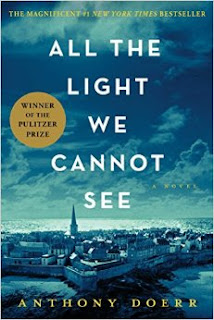Eight Girls Taking Pictures by Whitney Otto.
In Eight Girls Taking Pictures, Whitney Otto experiments with a new kind of fiction–a fictional portrait of real-life personalities. Though she changes their names and some details about their lives, what develops is a collage of fiction and non-fiction that tells the truth of the lives of eight innovative photographers.
In eight somewhat interconnected stories, Otto tell the stories of Imogen Cunningham, Madame Yevonde, Tina Modotti, Lee Miller, Grete Stern, Ruth Orkin, Judy Dater, and Sally Mann.
Though these women lived in different time periods and cultures, one constant emerges. Despite feminism that emerges in the 1970s, all of the women feel conflicted about their role as artist which conflicts greatly with other areas in their life. For most of these women, their roles as artist conflicts with motherhood, but for some, their work interferes with politics or other deeply held beliefs.
In the first story, Cymbeline faces the perplexing problem of wanting both a career (as a photographer) and a family. She first become enamored of her professor, Julius, while he and she photograph the “Procession of Princes,” in Dresden.
Her time in Berlin both opens and closes doors for her. Cymbeline is a fictional version of Imogen Cunningham, a trailblazing photographer, who was once an apprentice at Edward Curtis’ famous portrait studio in Seattle.
Other fictional portraits are those of Madame Yevonde whom Otto renames Madame Amadora. Madame Amadora feels conflicted between her life’s work, photography, and motherhood.
Clara Argento, a fictional character based on the life of Tina Modotti, also feels conflicted. While she has no children, she feels torn between her role as artist and revolutionary.
Charlotte Blum, a fictional version of Grete Stern, sums up best the conflicts these female artists feel:
“She didn’t hate being a wife any more than she hated being a mother. What she hated was the way that wife, mother, and photographer created an unsolvable equation. What she hated was trying to solve the mathematics of her various roles.”
Torn between her family in Argentina and her loves for Ines and photography, Clare laments that, “a woman always has to choose.”
According to Clare, women, cannot have career and family and love; they must choose one role at the expense of another–a theme that repeats itself throughout Eight Girls Taking Pictures.
Miri Max (Ruth Orkin), for instance, laments that she cannot be in,
“two places at once, two people at the same time. If she could split herself one Miri would be happy spending all day with her toddling children…Her other self would be making movies with David. Or possible taking pictures on her own…”
Eight Girls Taking Pictures does not shy away from the issues that have been tackled often–issues of women’s rights, marriage, and work. Otto, however, delves further by looking at the way motherhood conflicts with a woman’s role as artist. She distinguishes work from fulfilling work that involves creativity and a sense of achievement.
In the last chapter, Jenny can work as a photographer by taking wedding or debutante photographs but she wants something more. Though she is criticized for it, she takes intimate photographs of her children. The photographs are not merely family snapshots as they show the viewer both childhood and motherhood in the abstract.
Characters and their real life counterparts:
Cymbeline Kelley–Imogen Cunningham
Madame Amadora–Madame Yevonde
Clara Argento–Tina Modotti
Lenny Van Pelt–Lee Miller
Charlotte Blum–Grete Stern
Miri Marx–Ruth Orkin
Jessie Berlin–(partly-based on Judy Dater)
Jenny Lux–Sally Mann
A “Select bibliography” at the end of the novel is an unexpected gift to readers eager to learn more about the women portrayed in this work of historical fiction.
For more information about Whitney Otto, http://www.whitneyotto.com




 World War II-era fiction is popular right now but what makes this debut different portrays an ordinary German family. The incidents were inspired by the author’s own family. Wiseman’s mother’s family lived in Germany during the war.
World War II-era fiction is popular right now but what makes this debut different portrays an ordinary German family. The incidents were inspired by the author’s own family. Wiseman’s mother’s family lived in Germany during the war. 

